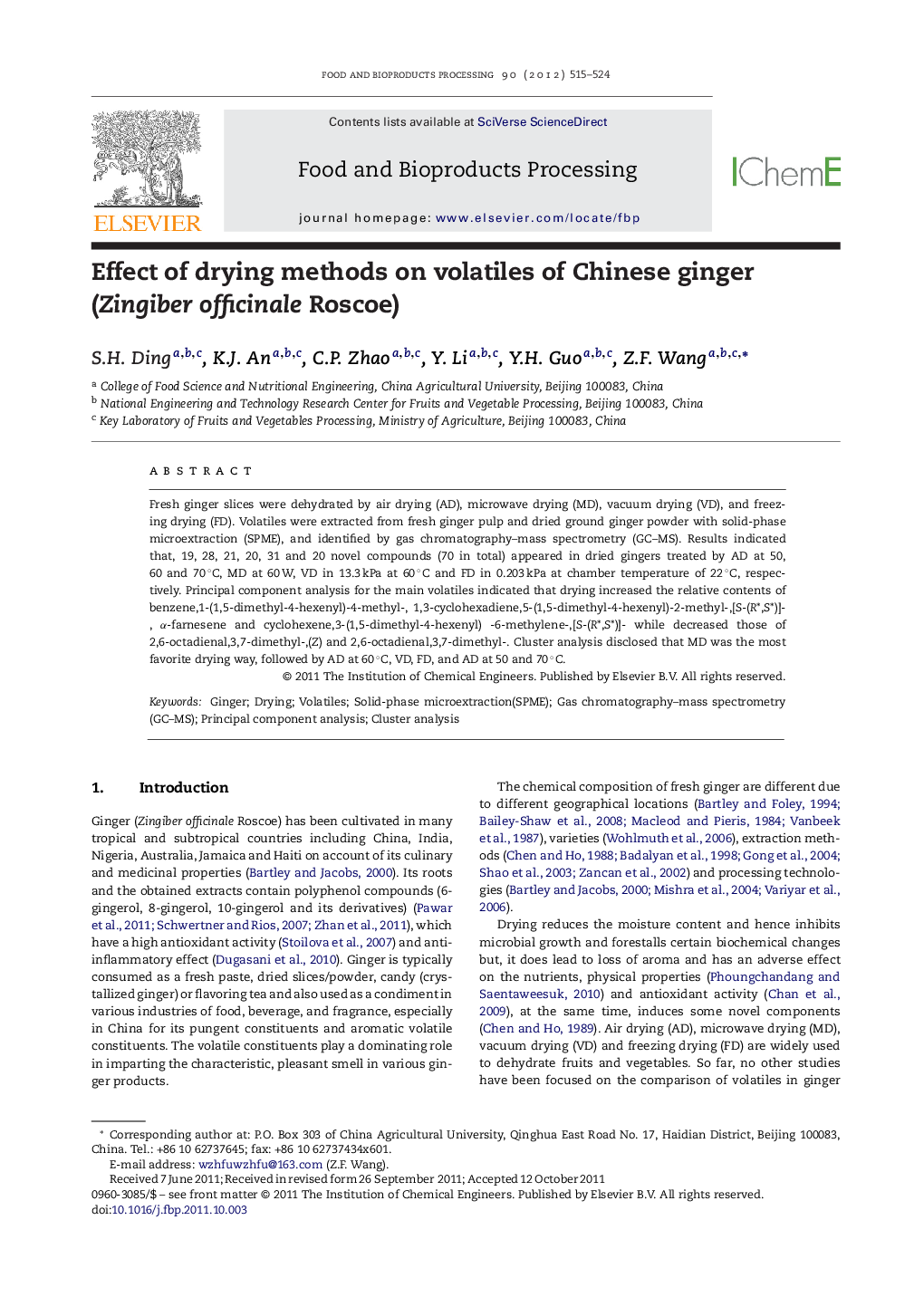| Article ID | Journal | Published Year | Pages | File Type |
|---|---|---|---|---|
| 19067 | Food and Bioproducts Processing | 2012 | 10 Pages |
Fresh ginger slices were dehydrated by air drying (AD), microwave drying (MD), vacuum drying (VD), and freezing drying (FD). Volatiles were extracted from fresh ginger pulp and dried ground ginger powder with solid-phase microextraction (SPME), and identified by gas chromatography–mass spectrometry (GC–MS). Results indicated that, 19, 28, 21, 20, 31 and 20 novel compounds (70 in total) appeared in dried gingers treated by AD at 50, 60 and 70 °C, MD at 60 W, VD in 13.3 kPa at 60 °C and FD in 0.203 kPa at chamber temperature of 22 °C, respectively. Principal component analysis for the main volatiles indicated that drying increased the relative contents of benzene,1-(1,5-dimethyl-4-hexenyl)-4-methyl-, 1,3-cyclohexadiene,5-(1,5-dimethyl-4-hexenyl)-2-methyl-,[S-(R*,S*)]-, α-farnesene and cyclohexene,3-(1,5-dimethyl-4-hexenyl) -6-methylene-,[S-(R*,S*)]- while decreased those of 2,6-octadienal,3,7-dimethyl-,(Z) and 2,6-octadienal,3,7-dimethyl-. Cluster analysis disclosed that MD was the most favorite drying way, followed by AD at 60 °C, VD, FD, and AD at 50 and 70 °C.
► Comparing effects of different drying ways on volatiles of ginger. ► Cluster analysis disclosed that microwave drying is the most favorite drying way. ► Drying increased contents of some volatiles while decreased those of others.
